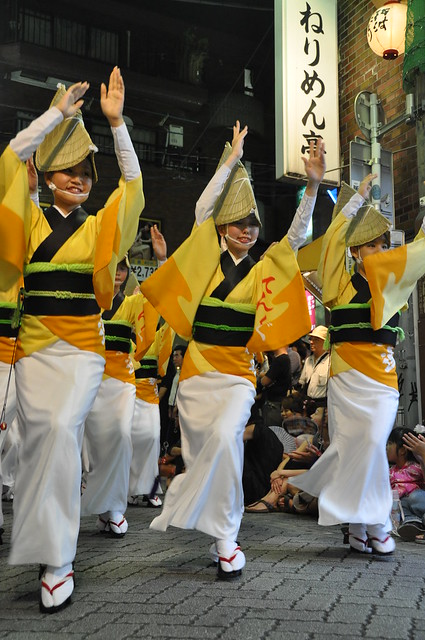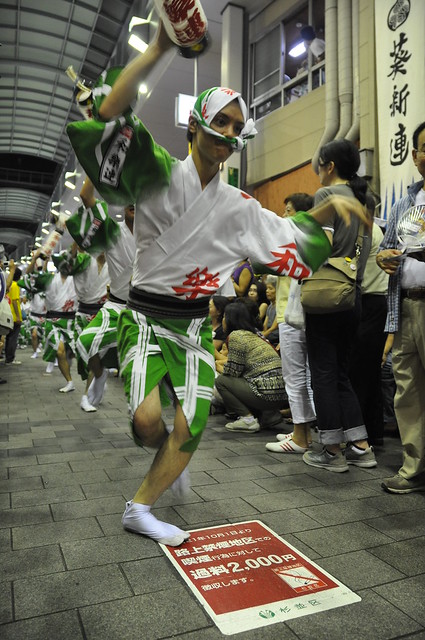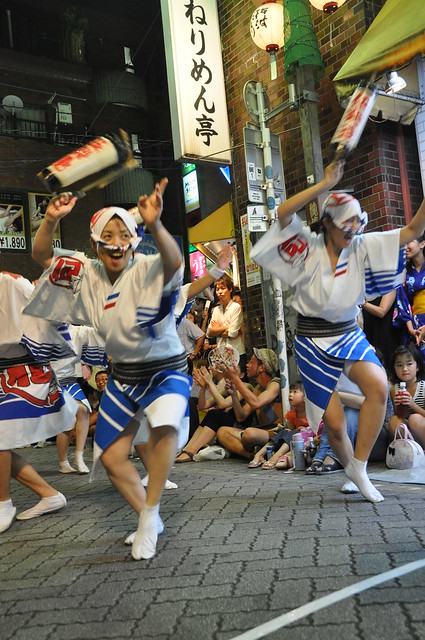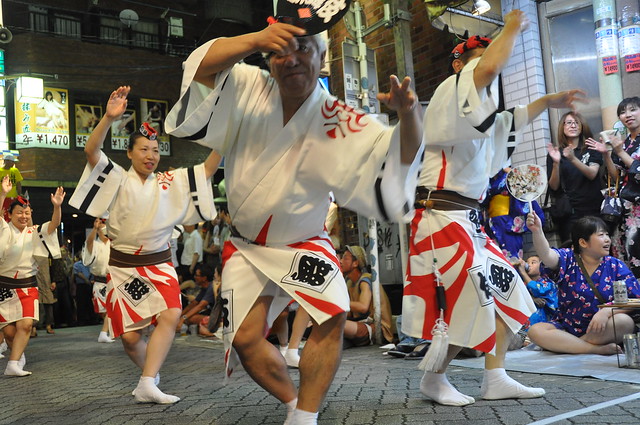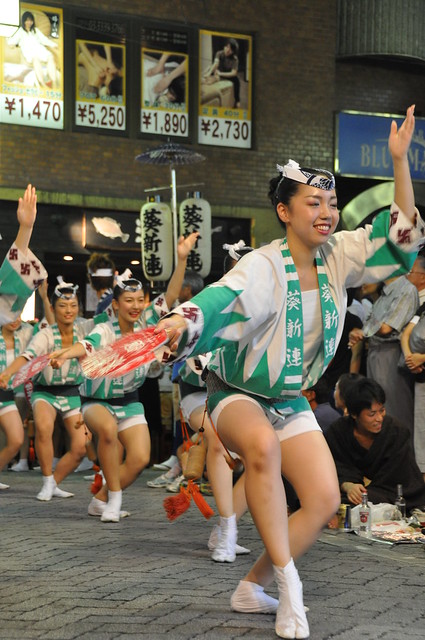The 65th Japan Traditional Kogei Exhibition(日本伝統工芸展) is taking place at Mitsukoshi department store in Tokyo from September 19 to October 1.
The exhibition requires the applicants to create sophisticated design based on high degree of professional skill in Japanese traditional techniques. The exhibition's winning works are available in each venue, but their prices are not indicated.
See the Japan Kogei Association site for further information:
https://www.nihonkogeikai.or.jp/ (Japanese version only)
Japan Traditional Kogei Exhibition:
https://www.nihonkogeikai.or.jp/exhibition/honten (Japanese version only)
The Exhibition will travel through the following venues:
Mitsukoshi Nihonbashi Main Store, Tokyo
September 19-October 1, 2018
Mitsukoshi Nihonbashi Main Store:
https://www.mitsukoshi.mistore.jp/nihombashi.html
Mitsukoshi Nagoya Sakae Store, Nagoya City, Aichi Prefecture
October 3-8, 2018
Mitsukoshi Nagoya Sakae Store:
https://mitsukoshi.mistore.jp/store/nagoya/index.html
http://nagoya.mitsukoshi.co.jp/
Takashimaya Kyoto Store, Kyoto Prefecture
October 17-22, 2018
Takashimaya Kyoto Store:
https://www.takashimaya.co.jp/kyoto/store_information/index.html
Ishikawa Prefectural Museum of Art, Kanazawa City, Ishikawa Prefecure
October 26-November 4, 2018
Ishikawa Prefectural Museum of Art:
http://www.ishibi.pref.ishikawa.jp/e_home/
Takashimaya Osaka Store, Osaka Prefecture
Novmber 7-12, 2018
Takashimaya Osaka Store:
https://www.takashimaya.co.jp/osaka/store_information/index.html
the Okayama Prefectural Museum of Art, Okayama City, Okayama Prefecture
November 15-December 2, 2018
The Okayama Prefectural Museum of Art:
http://okayama-kenbi.info/en/
Shimane Art Museum, Matsue City, Shimane Prefecture
December 5-25, 2018
Shimane Art Museum:
http://www.shimane-art-museum.jp/en/
the Kagawa Museum, Takamatsu City, Kagawa Prefecture
January 2-20, 2019
The Kagawa Museum:
http://www.pref.kagawa.lg.jp/kmuseum/foreign/
Mitsukoshi Sendai Store, Sendai City, Miyagi Prefecure
January 23-29, 2019
Mitsukoshi Sendai Store:
https://mitsukoshi.mistore.jp/store/sendai/index.html
Mitsukoshi Fukuoka Store, Fukuoka City, Fukuoka Prefecture
February 6-11, 2019
Mitsukoshi Fukuoka Store:
https://mitsukoshi.mistore.jp/store/fukuoka/index.html
http://www.m.iwataya-mitsukoshi.co.jp/index.html
Hiroshima Prefectural Art Museum, Hiroshima City, Hiroshima Prefecture
February 21-March 10, 2019
Hiroshima Prefectural Art Museum:
http://www.hpam.jp/
Mitsukoshi Matsuyama Store, Matsuyama City, Ehime Prefecture
March 12-17, 2019
Mitsukoshi Matsuyama Store:
https://mitsukoshi.mistore.jp/store/matsuyama/index.html
This blog mainly introduces traditional Japanese things including seasonal events, flowers, confectionery, handicrafts, bunraku(Japanese puppet theater). Short introductions and links to all of my blog posts are shown on four calendar pages on sidebar.
Events:
cherry blossom forecast:
https://n-kishou.com/corp/news-contents/sakura/?lang=en
https://sakura.weathermap.jp/en.php
https://tenki.jp/sakura/
https://weathernews.jp/sakura/news/
cherry blossom forecast:
https://n-kishou.com/corp/news-contents/sakura/?lang=en
https://sakura.weathermap.jp/en.php
https://tenki.jp/sakura/
https://weathernews.jp/sakura/news/
Wednesday, September 19, 2018
Saturday, August 25, 2018
Three main Bon dance of Japan
The Bon holidays were over last week. In many areas, the Bon festival is held from August 13 to 16 (in other areas, from July 13 to 16 or from 13th to 16th days of the 7th month in the lunar calendar.)
The Bon dance is one of the Bon events. The dance is said to have started when people danced in delight along to the Buddhist chants because it rained after doing a ritual for rain. Bon dances were originally held to send off the spirits of our ancestors, but they have become local festivals for entertainment. Originally, Bon dance took place from early evening until dawn. People used to gather and dance spontaneously to welcome the spirits of the dead or deities in the early evening and to send off them at dawn. People danced on the border between this world and the netherworld. After send-off ceremony, people never look back, or the spirits come along. The original form of Bon dance is inherited in some areas.
Gujo Odori in Gujo Hachiman, Gifu Prefecture
The dance is taking place for 32 nights during a long period from July 14 to Semtember 8 this year. Dance venues are different each time. People dance in the streets from 8 p.m. until the next morning at 5 a.m.(4 a.m. on the last day) from 13 to 16 August. It has been designated an Important Intangible Folk Cultural Property.
Dancers have dancing geta(wooden clogs) for Gujo Odori. The event has 10 dance songs. The first song is "kawasaki", and the nine songs including kawasaki are played over and over again. The last song is "Matsusaka." It is played only once a day. I performed Bon dance to tunes of kawasaki in gym class during high school.
According to a historical paper published in 1840, shrine parishioners danced at their shrine until dawn during the Bon period until the middle of the 18th century. The Gujo Domain issued some proclamations that samurai, their family members and their servants were not to be allowed to go dancing during the Bon period.
Gujo Hachiman Tourism Association:
http://www.gujohachiman.com/kanko/odori_e.html
All Night Dancing
All Night Dancing
midnight stalls
What first strikes you about this dance performance are dancers wearing black, fabric full-face hoods with two eye holes. Other dancers also hide their faces with rush braided hats.
Dancers wear distinctive, traditional attire. They are patchworked kimono called hanui. The oldest attire has been passed down from the Edo period. It's not uncommon to see the attire over 100 years old.
Adult women wear patchworked kimono with rush braided hats. Men and underage women wear tie-dyed kimono with black full-face hoods.
There is no records showing the bon dance's derivation and history. It is said that Nishimonai Bon Odori is a mixture of the dances for harvest and for the dead.
According to legend, an ascetic monk built a branch shrine which enshrined Zao Gongen and got people dance to pray for abundant harvests at the shrine in the end of 13th century.
A lord of Yashima Castle took refuge in Nishimonai Castle whose lord was his wife's father, but troops tried to attack Nishimonai Castle. The Yashima Castle's lord committed suicide by sword to take responsibility for bringing trouble to his father-in-law in 1593. The Nishimonai Castle's lord set fire to his castle and escaped to Shonai region in 1600. One theory holds that some retainers of the Yashima Castle's lord started Bon dance to pray for the soul of the deceased lord. According to another thoery, some ex-retainers of the Nishimonai Castle's lord who remained as farmers in Nishimonai started Bon dance in a reminiscent mood.
Visitors can see the three main Bon odori in Fujisawa, Kanagawa Prefecture around the end of July. Fujisawashuku Yugyounobon is held at shopping malls around Fujisawa Station and Yugyou-ji Temple for three days.
Fujisawashuku Yugyounobon(Japanese version only):
http://www.fujisawa-cci.or.jp/yugyou2018%20bosyu/index.html
●another festivals other than the three main Bon odori
Yamaga Lantern Festival in Yamaga City, Kumamoto Prefecture
It is held on 15 and 16 August. Women in yukata(casual summer kimono) dance with Kanatoro(gold and silver paper lanterns) on their heads. Now most Kanatoro are LED paper lanterns.
Yamaga Toro(lantern) is made of washi paper and glue. It was designated as national traditional industrial arts in 2013. Kanatoro is popular, but Yamaga Toro has another design that has the shape of various buildings.
Yamaga Toro dates back to the 12th century when Yamaga residents held up torches to light the way in a dense fog for Emperor Keiko and his party. They got to a temporary lodging for the emperor safely. The remains of the lodging(current Omiya Jinja Shrine) was dedicated to the emperor. The residents offered torches to the remains every year. In the Muromachi Period(ca.1336 - ca.1573), torches turned to paper lanterns.
It was in 1954 when women with lanterns on their head started to dance. Now 1,000 female dancers with lanterns on their head perform a dance for many tourists.
Yamaga Lantern Festival:
http://yamaga-tanbou.jp/about/toromatsuri/
From early evening until dawn, people dance in the streets at Owara Kaze no Bon, a festival to pray for an abundant harvest and protection of planted rice from high wind due to typhoons in Tatsuo City, Toyama Prefecture. The festival continues until dawn even after most tourists go to their accommodation.
Owara Kaze no Bon:
http://ichinen-fourseasonsinjapan.blogspot.com/2010/09/abnormally-hot-summer.html
The Bon dance is one of the Bon events. The dance is said to have started when people danced in delight along to the Buddhist chants because it rained after doing a ritual for rain. Bon dances were originally held to send off the spirits of our ancestors, but they have become local festivals for entertainment. Originally, Bon dance took place from early evening until dawn. People used to gather and dance spontaneously to welcome the spirits of the dead or deities in the early evening and to send off them at dawn. People danced on the border between this world and the netherworld. After send-off ceremony, people never look back, or the spirits come along. The original form of Bon dance is inherited in some areas.
Three main Bon odori(Bon dance) of Japan are Awa Odori(阿波踊り) in Tokushima Prefecture, Gujo Odori(郡上踊り) in Gifu Prefecture, and Nishimonai no Bon Odori(西馬音内の盆踊り) in Akita Prefecture.
Some information on Awa-odori(Awa dance festival) available at the following post:
Unfortunately, this year's Awa odori was a poorly run festival. Visitors and dancers were frustrated. Awa Odori Promotion Association announced that Awa odori will take place at a hall in Tokushima City as a charity event for the victims of the 2018 Japan floods on 24 September. Then about 1,000 dancers will perform at a park near the hall to raise money for the victims. Heavy downpours caused devastation across large parts of western Japan in late June through mid-July. The disaster left 225 dead and 11 missing (as of August 6.)
We've had many typhoons this year. In late July through early August, Typhoon Jongdari exceptionally moved from east to west over Japan, did two loops, and made landfall in Shanghai, China. Typhoon Soulik hit the Amami Islands, moved over the seas west of Kyushu, and made landfall in the Korean Peninsula on Friday before dawn. Typhoon Cimaron moved across the Japanese archipelago and weakened to a tropical storm on Friday. The remnants of typhoons Soulik and Cimaron brought heavy rainfall to Hokkaido.
For those who say Tokushima is far away, I tell them Awa-odori is seen in Tokyo and Saitama prefectures.
The 62nd Tokyo Koen-ji Awa Odori in Koen-ji, Tokyo
dates: 25 and 26 August
venues: Koen-ji Station, shopping mall around the station, and eight venues
A lot of dancing groups called ren dance at the venues and in the street. In 2017, 169 groups including ones in another areas, dancers from Tokushima participated in the dance festival.
Tokyo Koen-ji Awa Odori:
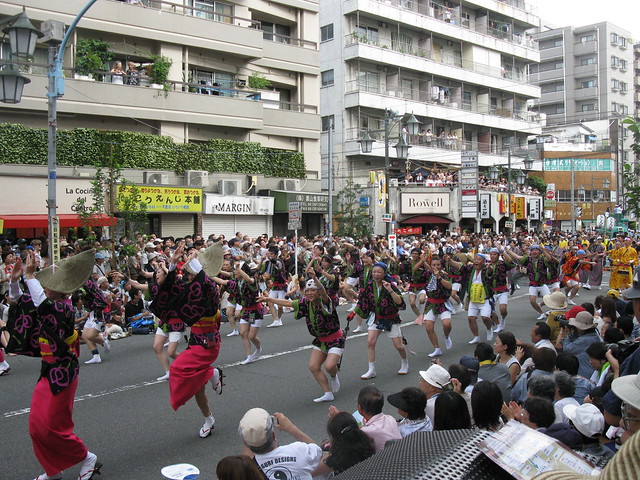 |
| Dancers 7 (credit:MarkPeteSwin/flickr) |
 |
| 120825高円寺阿波踊り21 (credit: midorisyu/flickr) |
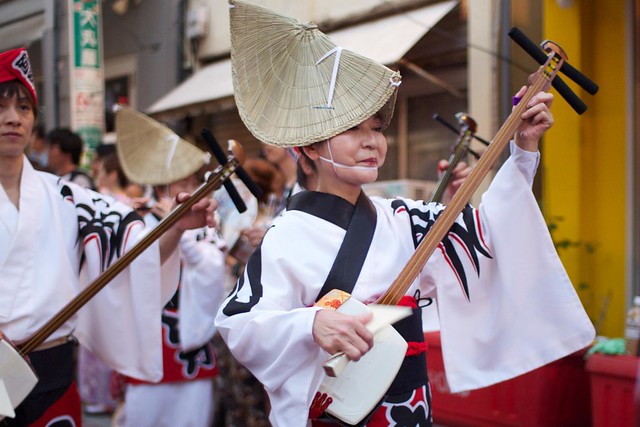 |
| 120825高円寺阿波踊り05 (credit: midorisyu/flickr) |
Minamikoshigaya Awa Dance in Koshigaya City, Saitama Prefecture
dates: 24 - 26 August
venues: Koshigaya Community Center(two halls and square), station square of Minamikoshigaya Station, and four venues(streets)
About 700,000 visitors came to watch this dance festival.
Minamikoshigaya Awa Dance:
https://www.saitamatsuri.jp/matsuri/koshigaya_awaodori/
http://www.minamikoshigaya-awaodori.jp/index.html (Japanese version only)
dates: 24 - 26 August
venues: Koshigaya Community Center(two halls and square), station square of Minamikoshigaya Station, and four venues(streets)
About 700,000 visitors came to watch this dance festival.
Minamikoshigaya Awa Dance:
https://www.saitamatsuri.jp/matsuri/koshigaya_awaodori/
http://www.minamikoshigaya-awaodori.jp/index.html (Japanese version only)
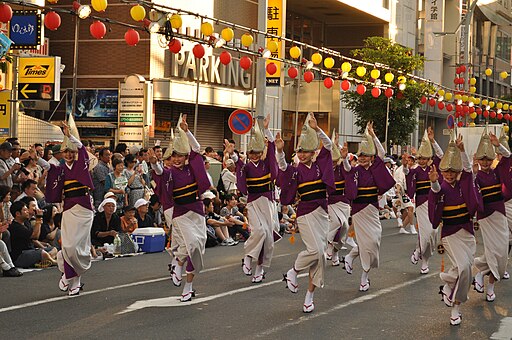 |
| credit:Ocdp from wikimedia commons |
Gujo Odori in Gujo Hachiman, Gifu Prefecture
The dance is taking place for 32 nights during a long period from July 14 to Semtember 8 this year. Dance venues are different each time. People dance in the streets from 8 p.m. until the next morning at 5 a.m.(4 a.m. on the last day) from 13 to 16 August. It has been designated an Important Intangible Folk Cultural Property.
Dancers have dancing geta(wooden clogs) for Gujo Odori. The event has 10 dance songs. The first song is "kawasaki", and the nine songs including kawasaki are played over and over again. The last song is "Matsusaka." It is played only once a day. I performed Bon dance to tunes of kawasaki in gym class during high school.
According to a historical paper published in 1840, shrine parishioners danced at their shrine until dawn during the Bon period until the middle of the 18th century. The Gujo Domain issued some proclamations that samurai, their family members and their servants were not to be allowed to go dancing during the Bon period.
Gujo Hachiman Tourism Association:
http://www.gujohachiman.com/kanko/odori_e.html
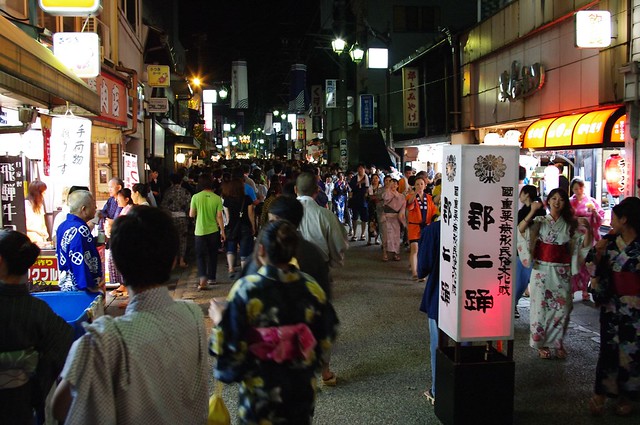 |
| Gujo odori (credit: tsuda/flickr) |
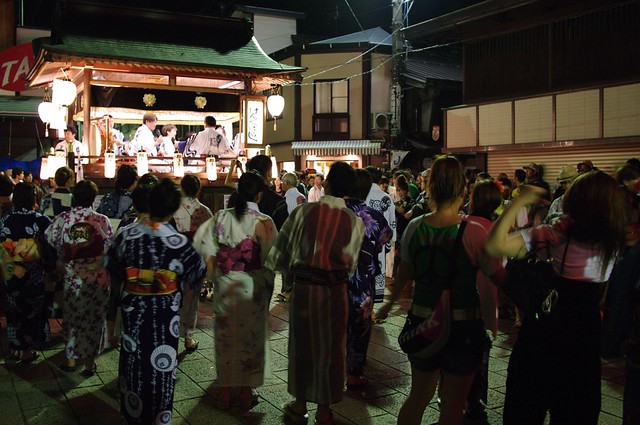 |
| Gujo odori (credit: tsuda/flickr) |
 |
| Gujo odori (credit: tsuda/flickr) |
All Night Dancing
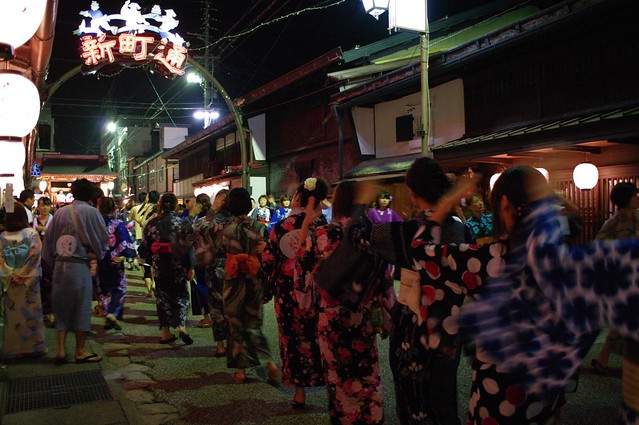 |
| Gujo odori all night (credit: tsuda/flickr) |
All Night Dancing
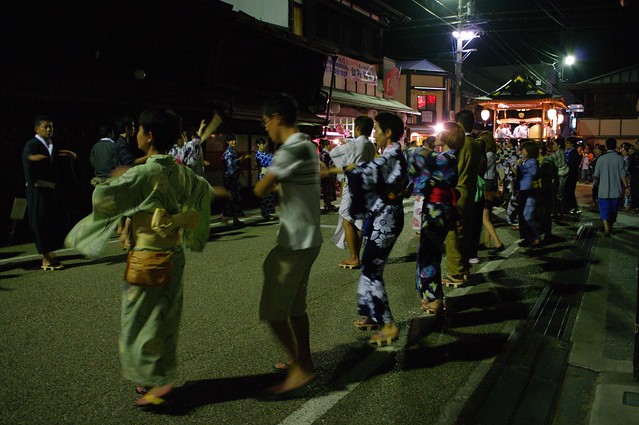 |
| Gujo odori all night (credit: tsuda/flickr) |
midnight stalls
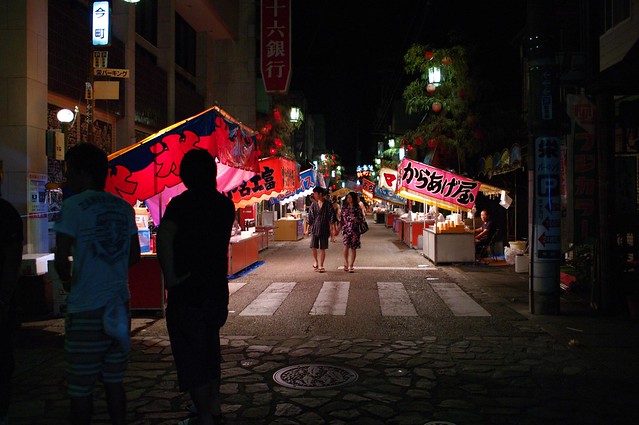 |
| Gujo odori all night (credit: tsuda/flickr) |
Nishimonai Bon Odori in Ugo-machi, Ogachi-gun, Akita Prefecture
The bon dance has been designated an Important Intangible Folk Cultural Property and takes place from 16 to 18 August every year.
Town Ugo Tourism&Products Association(Japanese version only):
http://ugo.main.jp/bonodori/index.html
The bon dance has been designated an Important Intangible Folk Cultural Property and takes place from 16 to 18 August every year.
Town Ugo Tourism&Products Association(Japanese version only):
http://ugo.main.jp/bonodori/index.html
What first strikes you about this dance performance are dancers wearing black, fabric full-face hoods with two eye holes. Other dancers also hide their faces with rush braided hats.
 |
| Nishimonai Bon Odori (credit:Chris Lewis/flickr) |
 |
| Nishimonai Bon Odori (credit:Chris Lewis/flickr) |
Dancers wear distinctive, traditional attire. They are patchworked kimono called hanui. The oldest attire has been passed down from the Edo period. It's not uncommon to see the attire over 100 years old.
 |
| Nishimonai Bon Odori (credit:Chris Lewis/flickr) |
 |
| Nishimonai Bon Odori (credit:Chris Lewis/flickr) |
 |
| Nishimonai Bon Odori (credit:Chris Lewis/flickr) |
There is no records showing the bon dance's derivation and history. It is said that Nishimonai Bon Odori is a mixture of the dances for harvest and for the dead.
According to legend, an ascetic monk built a branch shrine which enshrined Zao Gongen and got people dance to pray for abundant harvests at the shrine in the end of 13th century.
A lord of Yashima Castle took refuge in Nishimonai Castle whose lord was his wife's father, but troops tried to attack Nishimonai Castle. The Yashima Castle's lord committed suicide by sword to take responsibility for bringing trouble to his father-in-law in 1593. The Nishimonai Castle's lord set fire to his castle and escaped to Shonai region in 1600. One theory holds that some retainers of the Yashima Castle's lord started Bon dance to pray for the soul of the deceased lord. According to another thoery, some ex-retainers of the Nishimonai Castle's lord who remained as farmers in Nishimonai started Bon dance in a reminiscent mood.
Fujisawashuku Yugyounobon(Japanese version only):
http://www.fujisawa-cci.or.jp/yugyou2018%20bosyu/index.html
●another festivals other than the three main Bon odori
Yamaga Lantern Festival in Yamaga City, Kumamoto Prefecture
It is held on 15 and 16 August. Women in yukata(casual summer kimono) dance with Kanatoro(gold and silver paper lanterns) on their heads. Now most Kanatoro are LED paper lanterns.
Yamaga Toro(lantern) is made of washi paper and glue. It was designated as national traditional industrial arts in 2013. Kanatoro is popular, but Yamaga Toro has another design that has the shape of various buildings.
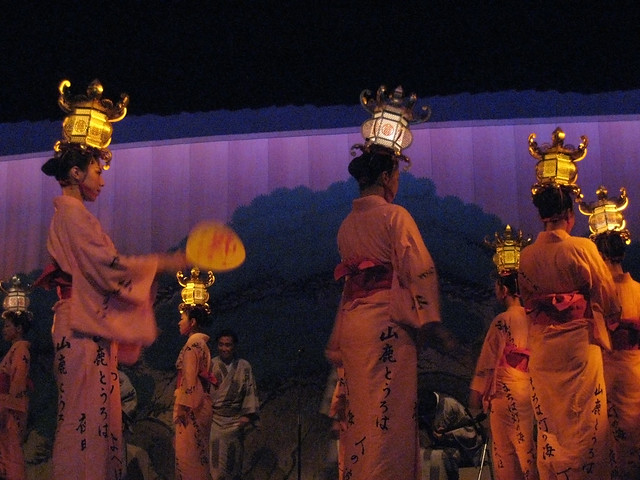 |
| Lantern Dancers in Yachiyosa theater (credit: JoshBerglund19/flickr) |
 |
| Lantern Dancers in Yachiyosa theater (credit: JoshBerglund19/flickr) |
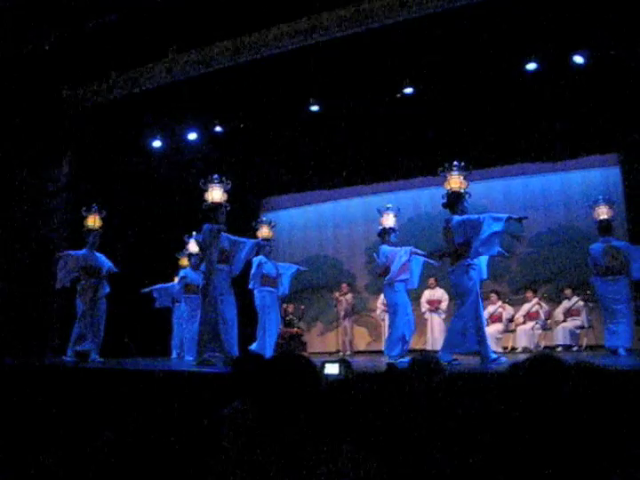 |
| Lantern Dancers in Yachiyosa theater (credit: JoshBerglund19/fllickr) |
Yamaga Toro dates back to the 12th century when Yamaga residents held up torches to light the way in a dense fog for Emperor Keiko and his party. They got to a temporary lodging for the emperor safely. The remains of the lodging(current Omiya Jinja Shrine) was dedicated to the emperor. The residents offered torches to the remains every year. In the Muromachi Period(ca.1336 - ca.1573), torches turned to paper lanterns.
It was in 1954 when women with lanterns on their head started to dance. Now 1,000 female dancers with lanterns on their head perform a dance for many tourists.
Yamaga Lantern Festival:
http://yamaga-tanbou.jp/about/toromatsuri/
Owara Kaze no Bon:
http://ichinen-fourseasonsinjapan.blogspot.com/2010/09/abnormally-hot-summer.html
Saturday, August 11, 2018
Japan's Pompeii - Kanbara
 |
| Kanbara Kannon-do Hall courtesy of トカ太(Tokata) |
 |
| Kanbara Kannon-do Hall courtesy of トカ太(Tokata) |
 |
| Kanbara Kannon-do Hall courtesy of トカ太(Tokata) |
The hall has 15 stone steps now. Legend has it that Kannon-do had 150 stone steps. In 1979 the grounds of the hall was examined. The hall had once had 50 stone steps. Debris buried its 35 steps(6.5 meters in height .)
And two female skeletal remains(partially mummified) were found.
 |
| Kanbara Kannon-do Hall courtesy of トカ太(Tokata) |
Mount Asama straddling the border between Gunma and Nagano Prefectures has often erupted. In 1783 the eruption reached its peak about 10:30 a.m. on August 5(the 8th day of the 7th month in the lunar calendar) after the volcano had repeated small eruptions. The eruption issued a large amount of pyroclastic fall, lava flow, pyroclastic flow, debris avalanche and lahar. (mudflow). Experts infer that debris avalanche battered Kanbara village. It crushed 957 homes and left 1,443 people dead in an area surrounding the mount.
The two remains were found at foot of the hall's steps. They are considered as parent and child or younger and much older siblings because two restored faces are quite similar. Younger woman was about to give older one a piggyback ride up the steps. They were so close to survival, but just couldn't survive the debris avalanche.
There are also other opinions. Some people say that there was no time to evacuate and that people happened to be at the hall to pray for the end of volcanic eruption. Another says that there was 10 minutes to evacuate because the speed of debris avalanche was estimated to be about 30 or 40 kirometers per hour.
The survivors were 80 villagers who stayed outside the village and 51 who were able to reach the hall, a neighboring village and a nearby mountain, happened to survive in a hut, a field, a survivor's house. After the disaster 93 Kanbara's survivors remained in the village. Five neighboring village headmen rode to rescue of 93 survivors. In the end 55 survivors have remained in Kanbara ever since. Most survivors in other devastated areas abandoned their villages.
The Kanbara's survivors re-established their village in the same place. Widowers got married widows. Parents of deceased children adopted orphans.
I have heard a man talking on a TV program before. As I got a strong impression from his talk, it is remembered to this day.
A presumed descendant of the survivors said, "A man asked the survivors, 'Why didn't you abandon your village?' They answered, 'Because we couldn't bear to leave our family members behind. They are buried under here.'"
Though it's uncertain as to whether or not he talked about the 1783 Asama Eruption, there is no other instance like the reconstruction of Kanbara village.
Kanbara was a pastoral village and yet a strategic spot on the road. Inns, wholesale stores, tea shops lined both sides of the street. The Edo Shogunate disbursed 1,050 ryo(approx. 136 million yen at present value) to Kanbara village and 4,766 ryo(approx. 620 million yen at present value) to 19 seriously damaged villages for post-eruption recovery. Actually, the Shogunate ordered Kumamoto Domain to pay 100,000 Ryo as reconstruction aid. The domain could not afford to pay the huge sums of money, so the domain's residents paid a lot of money. After the Kumamoto earthquakes occurred in 2016, Kanbara residents raised money for victims of the quakes. They thank Kumamoto citizens to this day.
 |
| Stone monument to commemorate the 32nd death anniversary of the victims (33回忌供養碑) courtesy of トカ太(Tokata) |
The surviviors held a Buddhist memorial service on the 32nd death anniversary of the victims in 1815. At the same time they built a monument with carved names of the victims by receiving a helping hand from neighboring villages.
 |
| Stone block bearing the name of Enmei-ji Temple courtesy of トカ太(Tokata) |
Enmei-ji Temple(延命寺) was buried by the eruption. The temple's chief priest was engulfed in the eruption on his way to the Mount Asama on that day. He headed for the volcano to pray to end its eruption. The location and existence of the temple was unknown. Ironically, the stone block was found at the riverside of the Agatsuma River due to flooding of the river in 1910.
The remains of its constructions was confirmed buried 6.5 meters under the ground, 200 meters from Kannon-do in 1980. Artifacts including Buddhist ritual objects had been discovered through six examinations since 1985.
The remains of folk houses at Tooka-no-kubo(十日ノ窪) were examined in 1979 and 1980. About 2,000 housewares were found. They included some articles such as a lacquer comb, a tortoise shell hairpin, a mercury mirror, a tea bowl and a kettle for the tea ceremony. Their owners were commoners.
 |
| Monument to the Asama Eruption, gravestones, and Okomori-do courtesy of トカ太(Tokata) |
Okomori-do is a building with hanging towels located behind stonegraves. Kannon-do became known to the whole country after examination in 1979. The hall had an increasing number of tourists. In 1979, 7th and 8th generation descendants of the survivors and their relatives, newcomers after the eruption, launched Kanbara Kannon-do Hoshikai(service club.) They take turns to receive visitors. They offer prayers to the victims, hold memorial service for the victims on August 5 every year.
As of 2001, about 80 percent of Kanbara village residents were the descendants of the survivors. So they had a tremendous amount of respect for Kannon(Goddess of Mercy) enshrined in Kannon-do who saved dozens of survivors. Villagers who helped the excavation works had strong sense of prayer. They saw the lifestyles of their ancestors and felt the pains of the victims. Kannon-do is also a meeting place for residents.
A memorial service called mawari-nenbutsu takes place twice a month. Homes used to take turns providing a venue for it. It is held at a local multipurpose center now. Not all homes participate in it. In the venue, three hanging scrolls with the names of the 477 victims, the Thirteen Buddhas, Kobo-Daishi(Kukai) are displayed. Participants chant some nenbutsu(prayers to Amitabha Buddha) and wasan. Wasan are Buddhist hymns in Japanese. Wasan chanted here were made in the Meiji Period. They represent the tragedy of the 1723 Asama eruption and a prayer to Amitabha Buddha.
Tsumagoi Kyodo Shiryokan(嬬恋郷土資料館, Tsumagoi Folk Museum)
The museum shows artifacts, illustration of damage, an erupting volcano diorama, restored faces of two women who were found at foot of Kannon-do's steps. Visitors can see views of Mount Asama and current Kanbara area in the observation room.
Tsumagoi Kyodo Shiryokan(Japanese version only):
https://www.vill.tsumagoi.gunma.jp/shiryo_kan/index.html
Tsumagoi Village is Japan's top producer of cabbages and is a popular tourist destination.
 |
From Wikimedia Commons
|
 |
| Palcall Tsumagoi Ski Resort in Tsumagoi, Gunma, Japan. From Wikimedia Commons |
The Lava covered about 6.8 square kilometers of the surrounding forest, forming a flow field 800-2,000m wide and extending 5.5 km to the north. The analyses of the welded pyroclastic rocks show that the Oni Oshidashi lava is considered to be clastogenic lava. Pyroclastic material ejected from a volcanic vent piled up around the vent in the shape of a cone with a central crater. A high flux of pyroclast accumulation around the vent led to clastogenic lava flows from the northern lowest rim of the summit crater. "Oni Oshidashi" means "lava that an ogre pushed outward from a volcano."
 |
| Oni Oshidashi 鬼押出し (credit: duke.yuin/ flickr) |
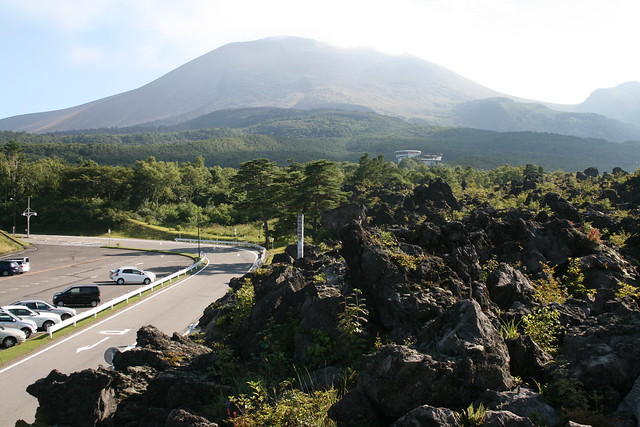 |
| Oni Oshidashi IMG_0715.JPG (credit: bizmac/flickr) |
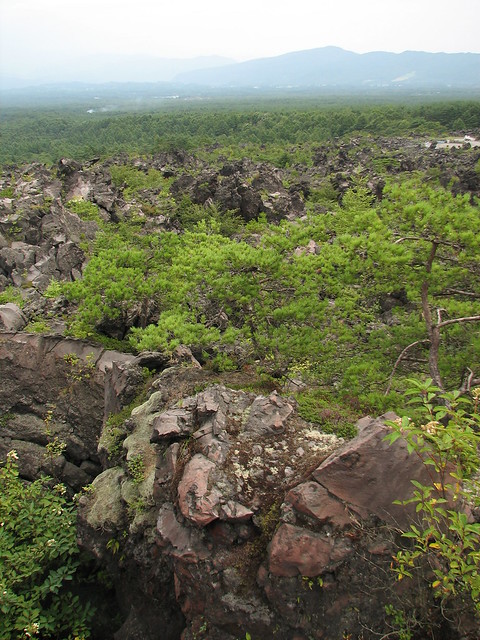 |
| onioshidashi_03 (credit: yamakidoms/flickr) |
 |
| Mt.Asama as seen from Onioshidashi, Tsumagoi Vill., Gunma Pref., Japan credit:Σ64 from Wikimedia Commons |
Visitors can see the Oni Oshidashi lava at the Onioshidashi-en(鬼押出し園, Onioshidashi Park) or the Naganohara town municipal Asama-en(浅間園, Asama Park).
The Onioshidashi Park is located near Karuizawa. The Kokudo Corporation developed Onioshidashi as a tourist site. Now Prince Hotels manages the park.
In the park Kannon-do(a branch temple of Kan'ei-ji Temple in Ueno, Tokyo) was built to mourn for the victims in 1958. The survivors of the volcanic eruption sought rescue from the Kan'ei-ji Temple. The chief priest of the Zenko-ji Temple in Nagano Prefecture(the former chief priest of the Kan'ei-ji) came to the disaster area, provided meals to the survivors, and chanted a prayer for the victims for 30 days. In the following year, 1784, the priest held a memorial service for the victims at the Zenko-ji Temple.
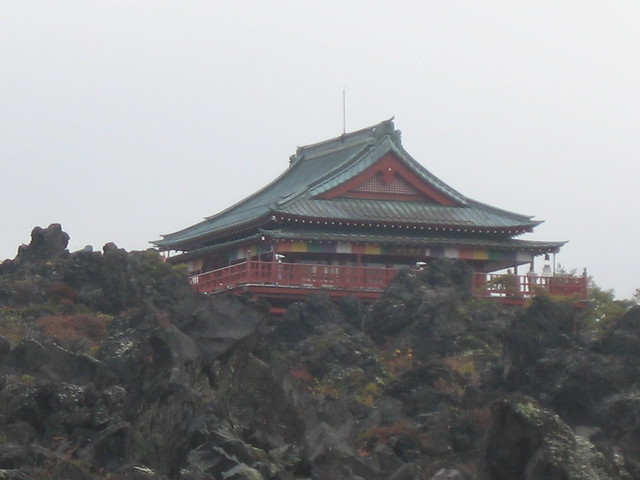 |
| Asamayama Kannon-do 浅間山観音堂 (credit:duke.yuin/ flickr) |
 |
| Asamayama Kannon-do
from Wikimedia Commons
|
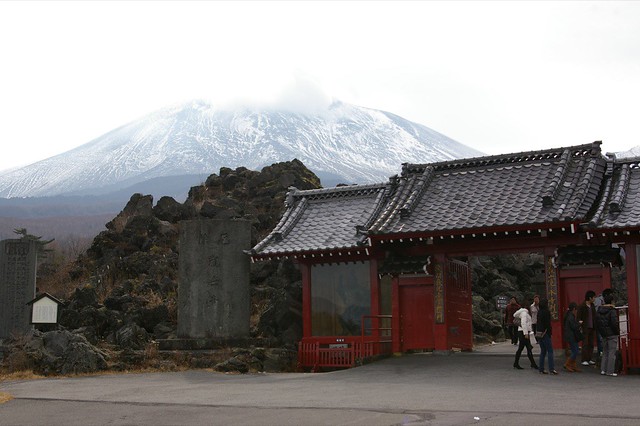 |
| Asamayama Kannon-do 鬼押し出し (credit: Nao Iizuka/ flickr) |
The Naganohara town municipal Asama-en has the Asama Volcano Museum, a volcano walk, a trekking course(need for guide, since Mt. Asama is a volcano. Small eruptions sometimes occur at Mt. Asama. Advance reservations are required), a trailer site, a cycleway in the forest, and a motorcycle museum(almost Japanese classic bikes.)
 |
| Asama Volcano Museum credit:京葉快速26 from Wikimedia Commons |
the Onioshidashi-en (Japanese version only):
Naganohara town municipal Asama-en(Japanese version only):
The Great Tenmei famine is considered to have set in 1782, and lasted until 1788. The 1723 Asama eruption contributed to the famine. Volcanic ash was sent down around Japan, resulting in cold weather that led to catastrophic crop failure. Mount Iwaki in Aomori Prefecture also erupted in 1783.
In Iceland, the Laki volcanic fissure erupted over an eight-month period between June 1783 and February 1784. The Laki eruption and its aftermath affected the whole of the northern hemisphere.
Friday, July 6, 2018
Hotarugari( firefly-watching events)
Hotaru-gari(蛍狩り) literally means "hunting for fireflies", but actually means going out to see flashing fireflies. The Japan Meteorological Agency announced the end of the rainy season in the Kanto region on 29 June. The season ended 7 days earlier than last year and 22 days earlier than average. A seasonal rain front activated by Typhoon Prapiroon(Typhoon No.7) has brought torrential downpours in many parts of Japan. The threat of heavy rainfall and flooding will persist until Sunday.
Firefly-watching is nearing an end while I am dillydallying. Most of firefly-watching events were done, but some of them will last until mid-July.
Kaneda River in Nan-bu cho, Tottori Prefecture
audience waiting to flashing fireflies at Hotaru no Sato in Fukutsu City, Fukuoka Prefecture
Kawaura River, Minokamo City, Gifu Prefecture
mid- to late June
In early June, Hotaru-hojo-sai (Releasing Fireflies Ritual) is held at Yanagihara Shinchi Pond in Tsurugaoka Hachimangu Shrine, Kanagawa Prefecture. Visitors can see fireflies flashing during a week from the ritual.
Tokyo Hotaru Festival imagined fireflies by Sumida river through LED lights. This event is not held any more.
The word "hotaru (fireflies) " appeared in Nihonshoki (Chronicles of Japan) finished in 720, but it is unclear what the word meaned.
In the Heian period(794-1185), fireflies were referred in literature such as the collection of poems "Collection of Ten Thousand Leaves", Sei Shonagon's "The Pillow Book", Murasaki Shikibu's "The Tale of Genji."
Sei Shonagon praised that lots of fireflies flitted to and fro on a moonless summer night. She also loved that a couple of fireflies hovered and blinked a dim light.
Hotaru (The Fireflies) is the 25th chapter of "The Tale of Genji." When Genji's half-brother Hotaru Hyobukyo no Miya(蛍兵部卿宮) visits Tamakazura(玉鬘, Genji's adopted daughter), Genji releases fireflies behind a screen to light up her with fireflies, showing her beauty to him.
Genjiko(源氏香) is a game in Ko-do( incense burning) in which participators smell five scents and guess same ones. Five scents can be all the same or different. There are 52 possible combinations of answers. A collection of the patterns that show the combinations is Genjiko no zu. The combinations are assigned to the Chapters of “The Tale of the Genji.” Five vertical lines mean scents. The rightmost line means the first scent, and the leftmost one does the fifth scent. participators connect the lines that seem to be the same scents.
In the Heian Period, fireflies symbolized feelings of love, visible love, yearning heart. Actually fireflies light up to attract a mate.
Woman poet Izumi-Shikibu(ca.978-?) depicted fireflies as her visible affection for her husband in one of her waka poems. She felt like her strong feelings for him left her body and flew around flashing. Commuter marriage was common among nobles in the Heian Period. Noblemen visited their wives' houses. It was common that a married couple of nobles lived apart. A nobleman who lost interest in his wife gradually kept away from her. Her husband also had not seen her for a long while.
Minamoto no Shigeyuki (源 重之, died 1000) wrote a poem about one sided love:
"Fireflies can't tell their feelings in words. They can do nothing but burn out. They arouse pity."
In the Edo period, commoners also went out to see fireflies when they began to appear at dusk. Edo residents visited spots to see fireflies such as Sorin-ji Temple in Yanaka, now-defunct Sugatami-bashi Bridge (an area around Nishi-waseda and Takada), an area near Asukayama Park in Kita Ward, an area near Iidabashi, jindai-ji Temple in Chofu City.
Outstanding Kabuki actor Sawamura Tanosuke Ⅲ(1845-1878) is graphically portrayed in this print. He was a gorgeous onnagata (an actor specializing in female roles) , even after he had his both legs amputated at the knee due to necrosis and had his right hand and left four fingers amputated. He performed Kabuki with his prosthetic limb.
hotarukago:
https://blog.tokyu-resort.co.jp/branch/nasu/200907/29/blog091636-17227.html
An around 70-year-old woman who were born and raised in Tokyo, one of my friends, saw fireflies flickering above the paddies in her childhood. They used to be common insects even in Tokyo until about 60 years ago. Now fireflies drastically have decreased in Japan because they can live only in clean rivers. So artificially-raised fireflies are released in many parts of Japan. Even now, there is a natural growth area of fireflies in Seijo, Tokyo. The area is not open to the public for the sake of environmental preservation.
In Japan, spotted bellflower(Campanula punctata) is called Hotaru-bukuro(蛍袋), which literally means a sack for fireflies. It is said to be named for a Japanese lantern which was also called hotaru(火垂る). According to another account, It was named so because a bellflower containing fireflies looked like a lighted lamp.
Firefly-watching is nearing an end while I am dillydallying. Most of firefly-watching events were done, but some of them will last until mid-July.
 |
| 蛍 / Firefly (credit:St.Také/flickr) |
Kaneda River in Nan-bu cho, Tottori Prefecture
 |
| fireflies 05 (credit: mstkeast/flickr) |
audience waiting to flashing fireflies at Hotaru no Sato in Fukutsu City, Fukuoka Prefecture
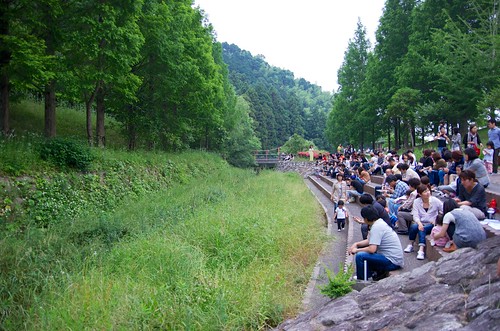 |
| IMGP1346 (credit: yuki5287/flickr) |
mid- to late June
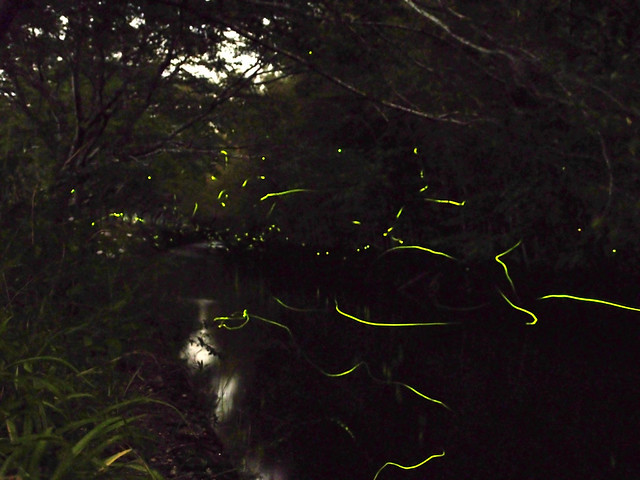 |
| Numerous fireflies glowed above the stream. 川浦川の蛍(ホタル) (credit: T.Kiya/flickr) |
In early June, Hotaru-hojo-sai (Releasing Fireflies Ritual) is held at Yanagihara Shinchi Pond in Tsurugaoka Hachimangu Shrine, Kanagawa Prefecture. Visitors can see fireflies flashing during a week from the ritual.
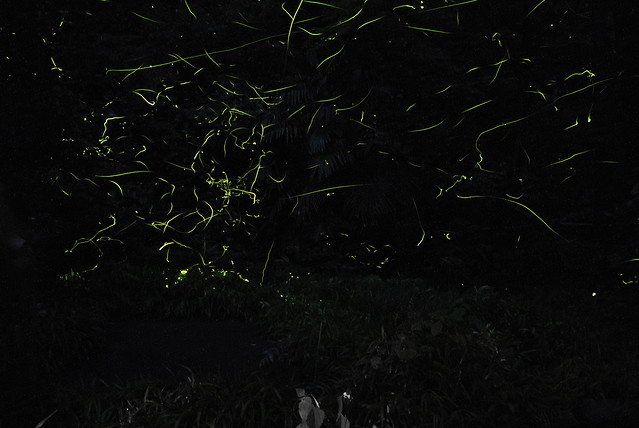 |
| 鶴岡八幡宮ほたるまつり - 柳原神池/鎌倉散歩 (credit: Tranpan23/flickr) |
Tokyo Hotaru Festival imagined fireflies by Sumida river through LED lights. This event is not held any more.
 |
| IMG_9810 (credit: Hetarllen Mumriken/flickr) |
In the Heian period(794-1185), fireflies were referred in literature such as the collection of poems "Collection of Ten Thousand Leaves", Sei Shonagon's "The Pillow Book", Murasaki Shikibu's "The Tale of Genji."
Sei Shonagon praised that lots of fireflies flitted to and fro on a moonless summer night. She also loved that a couple of fireflies hovered and blinked a dim light.
Hotaru (The Fireflies) is the 25th chapter of "The Tale of Genji." When Genji's half-brother Hotaru Hyobukyo no Miya(蛍兵部卿宮) visits Tamakazura(玉鬘, Genji's adopted daughter), Genji releases fireflies behind a screen to light up her with fireflies, showing her beauty to him.
 |
Title: Hotaru (The Fireflies)
Artist: Ichiyosai Toyokuni(Utagawa Toyokuni Ⅲ/Kunisada I , 1786-1864)
Book title: Genjiko no zu(源氏香の図)
courtesy of National Diet Library
|
Genjiko(源氏香) is a game in Ko-do( incense burning) in which participators smell five scents and guess same ones. Five scents can be all the same or different. There are 52 possible combinations of answers. A collection of the patterns that show the combinations is Genjiko no zu. The combinations are assigned to the Chapters of “The Tale of the Genji.” Five vertical lines mean scents. The rightmost line means the first scent, and the leftmost one does the fifth scent. participators connect the lines that seem to be the same scents.
 |
Set partitions 5; Genji symbols
By Watchduck (a.k.a. Tilman Piesk)
from Wikimedia Commons |
 |
| Genjikonozu by Mukai from Wikimedia Commons |
Woman poet Izumi-Shikibu(ca.978-?) depicted fireflies as her visible affection for her husband in one of her waka poems. She felt like her strong feelings for him left her body and flew around flashing. Commuter marriage was common among nobles in the Heian Period. Noblemen visited their wives' houses. It was common that a married couple of nobles lived apart. A nobleman who lost interest in his wife gradually kept away from her. Her husband also had not seen her for a long while.
Minamoto no Shigeyuki (源 重之, died 1000) wrote a poem about one sided love:
"Fireflies can't tell their feelings in words. They can do nothing but burn out. They arouse pity."
In the Edo period, commoners also went out to see fireflies when they began to appear at dusk. Edo residents visited spots to see fireflies such as Sorin-ji Temple in Yanaka, now-defunct Sugatami-bashi Bridge (an area around Nishi-waseda and Takada), an area near Asukayama Park in Kita Ward, an area near Iidabashi, jindai-ji Temple in Chofu City.
 |
Title: Hotaru-gari Azuma Fuzoku(蛍狩当風俗)
(Kabuki actor Sawamura Tanosuke Ⅲ)
Artist: Toyokuni(Utagawa Toyokuni Ⅲ/Kunisada I, 1786-1864)
Publication Date: 1860
courtesy of National Diet Library
|
 |
Title: Hotaru-gari Azuma Fuzoku(蛍狩当風俗)
(Kabuki actor Ichikawa Ichizo Ⅲ)
Artist: Toyokuni(Utagawa Toyokuni Ⅲ/Kunisada I, 1786-1864)
Publication Date: 1860
courtesy of National Diet Library
|
 |
Title: Hotaru-gari Azuma Fuzoku(蛍狩当風俗)
(Kabuki actor )
Artist: Toyokuni(Utagawa Toyokuni Ⅲ/Kunisada I, 1786-1864)
Publication Date: 1860
courtesy of National Diet Library
|
 |
Title: Hotaru-gari Azuma Fuzoku(蛍狩当風俗)
(Kabuki actor )
Artist: Toyokuni(Utagawa Toyokuni Ⅲ/Kunisada I, 1786-1864)
Publication Date: 1860
courtesy of National Diet Library
|
 |
| Title: Odori Keiyo Gedaizukushi(踊形容外題尽) Eiri shosetsu asagao monogatari(絵入稗史蕣物語) Artist: Utagawa Toyokuni III(Utagawa Kunisada I, 1786-1864) Publication Date: 1856 courtesy of National Diet Library |
hotarukago:
https://blog.tokyu-resort.co.jp/branch/nasu/200907/29/blog091636-17227.html
An around 70-year-old woman who were born and raised in Tokyo, one of my friends, saw fireflies flickering above the paddies in her childhood. They used to be common insects even in Tokyo until about 60 years ago. Now fireflies drastically have decreased in Japan because they can live only in clean rivers. So artificially-raised fireflies are released in many parts of Japan. Even now, there is a natural growth area of fireflies in Seijo, Tokyo. The area is not open to the public for the sake of environmental preservation.
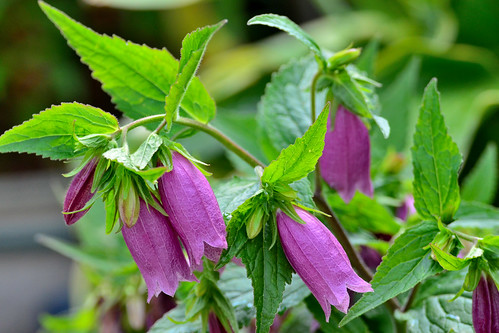 |
| ホタルブクロ/蛍袋 (Bellflower) (credit: Dakiny/flickr) |
 |
| Hotaruyaki (credit: raichovak/flickr) porcelain with a transparent pattern called 'hotarude' |
Subscribe to:
Posts (Atom)
